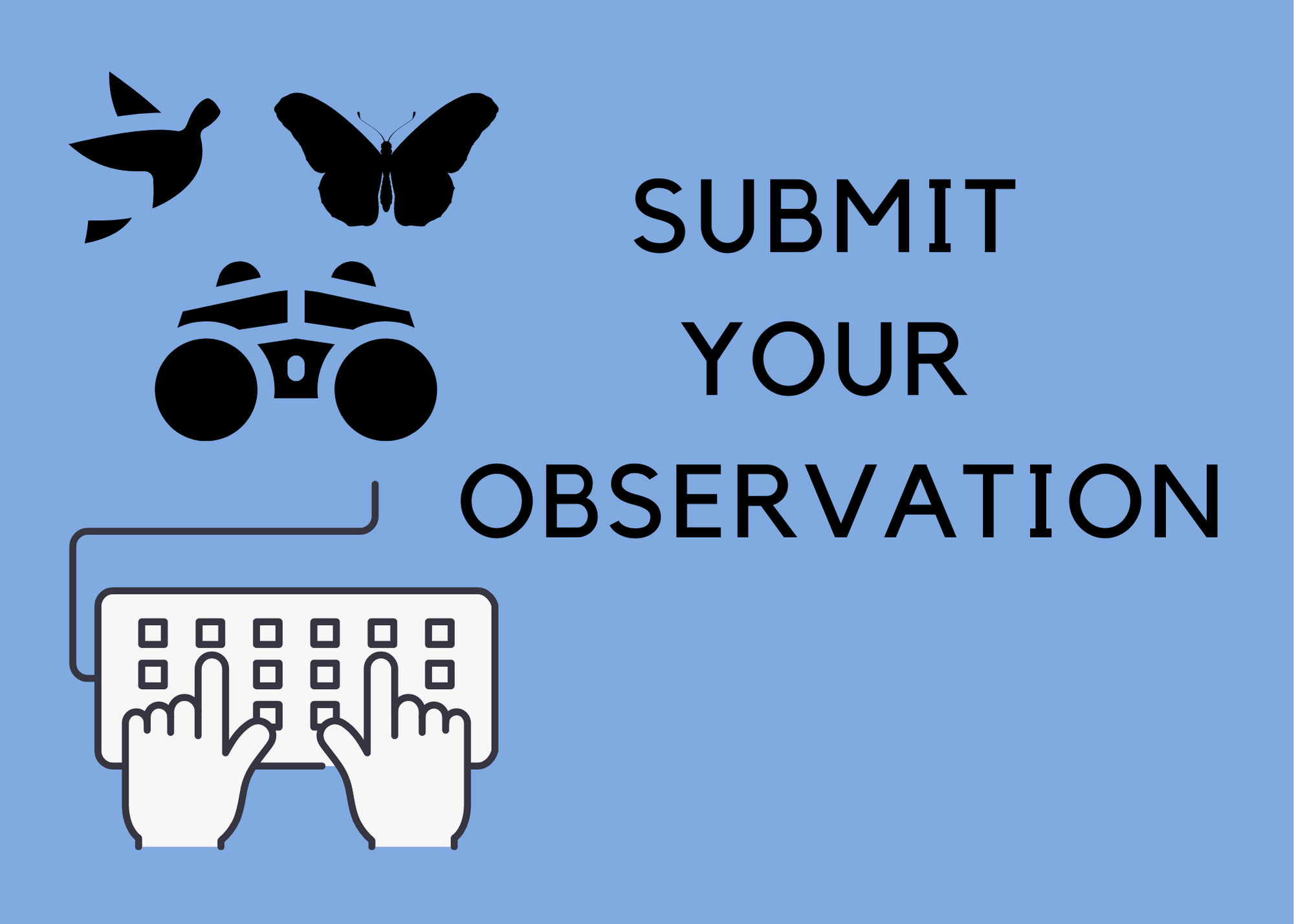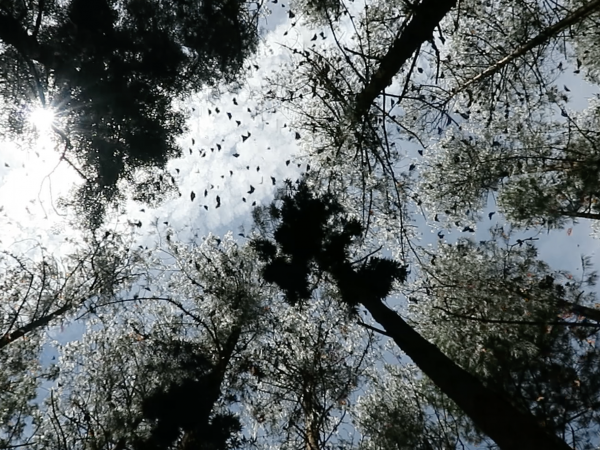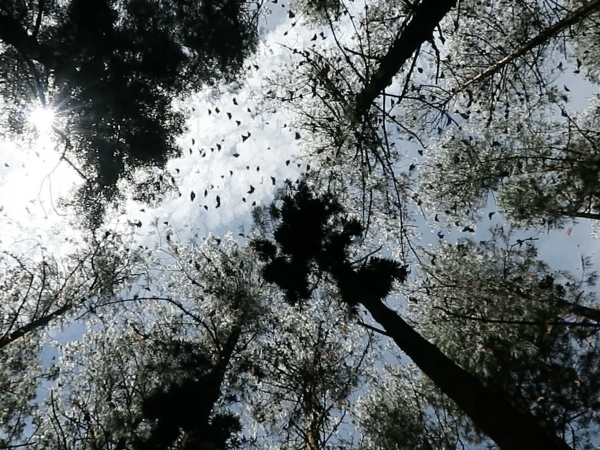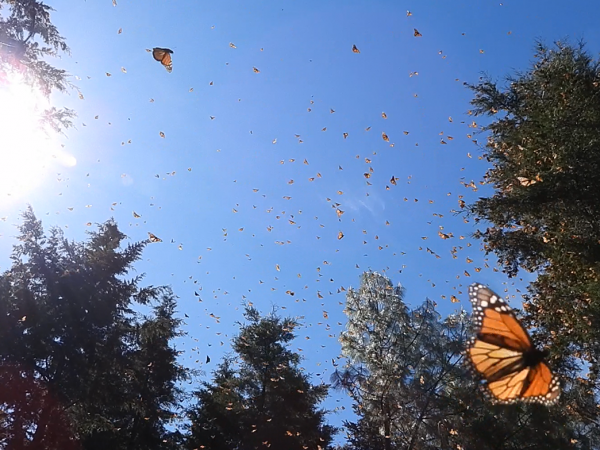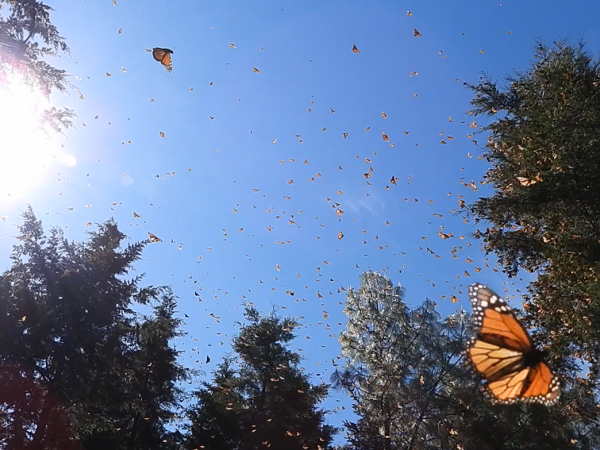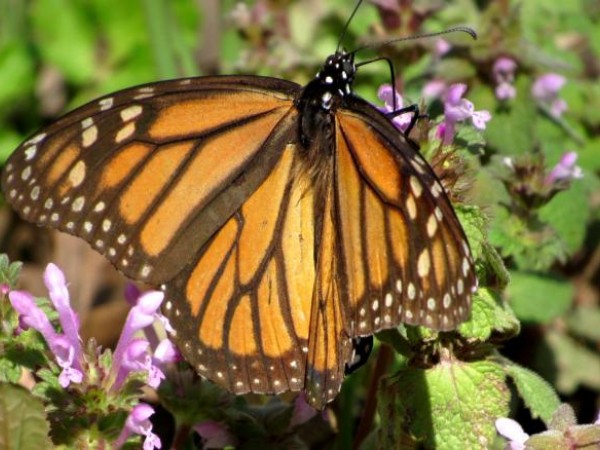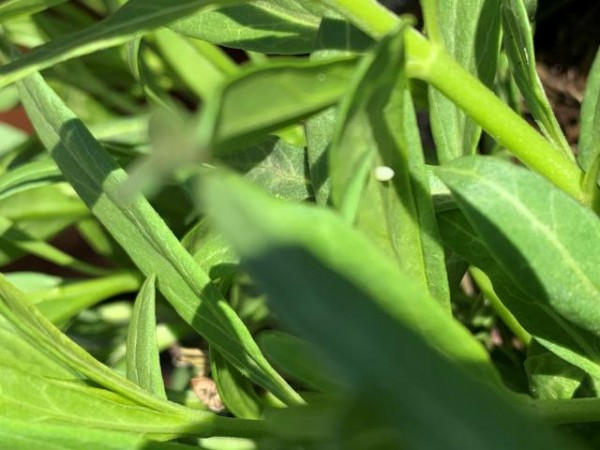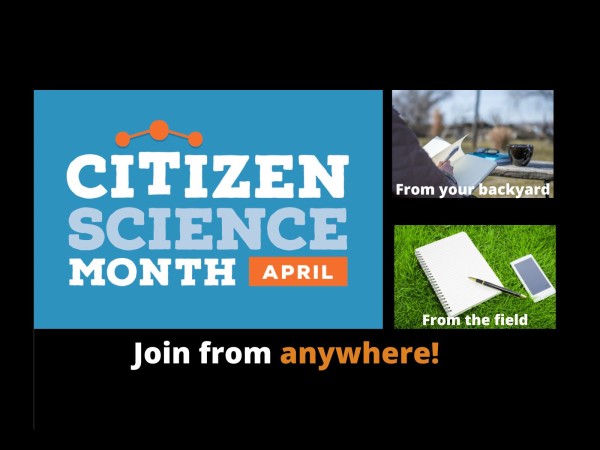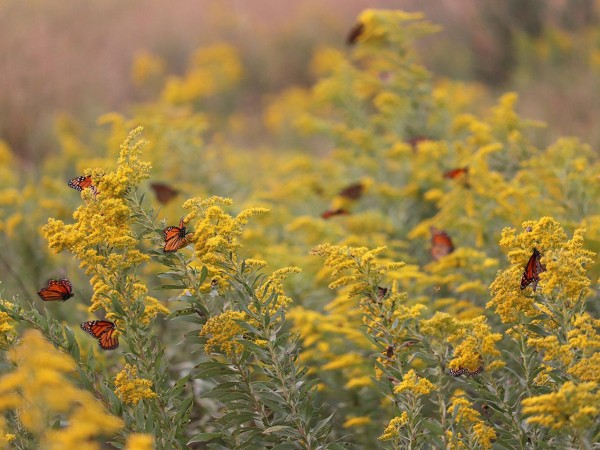Stop-and-Go Progress
Eastern Monarch Population
Letter from Estela Romero: Breaking Departure Date Records
Down the mountain from El Rosario Sanctuary, a portion of the Río Grande monarch colony remains. According to Estela Romero, when the final departure does occur, it will break records. Estela writes, "I visited the Río Grande location this past Monday. Contrary to our hope, a significant population of monarchs remain. It has been a month since the first monarchs moved down the mountain from the El Rosario Sanctuary to this location . . . Water and nectar are scarce. The national meteorological service forecast severe heat over the next few days. The eventual departure of these remaining monarchs will break the historic record of April 4th experienced in the late 90s, early 2000s."
Read more of Estela Romero's Letter: Breaking Departure Date Records»
Letter from Ana and Pato Moreno: The Monarchs Know What They Are Doing
Ana and Pato Moreno also share news of late departures at Cerro Pelon Sanctuary. And while there has been understandable concern, Ana and Pato provide some reassurance. They write, "It might seem strange and worrying for some people, to see that there are still some butterflies in their colonies. But for my dad, who was a Forest ranger for over 30 years, it doesn’t seem strange. He says it was normal to see butterflies until the end of March and the beginning of April . . . Meanwhile the rangers and arborists begin to feel the emptiness that the butterflies are leaving. And they are getting ready to make their daily patrols on the forest, to protect it. And so, next season the butterflies have a place to come back."
Read more of Ana and Pato Moreno’s Letter: The Monarchs Know What They Are Doing»
Leer más de la carta de Ana y Pato Moreno: Las Monarcas Saben Lo Que Están Haciendo»
Update: The last remaining monarchs have left Cerro Pelon Sanctuary. Ana Moreno shared this news on Tuesday, April 5: "The butterflies in the place known as Las Canoas left on March 29th and the butterflies that were next to La Lagunita left on Friday 1st. So there are no more butterflies at Cerro Pelón."
Eastern Monarch Spring 2022 Report #3
The leading edge of migration ( around latitude 36°N) is ever so slightly behind where it was at this same time last year. The northernmost report is from Bluff City, Kansas. Farther east, monarchs are making their way up through the Carolinas. Milkweed emergence is behind last year’s pace. And less milkweed means less opportunities for monarchs to lay eggs. If you are seeing milkweed and/or monarch eggs, please report these observations to Journey North.
Read more of the Eastern Monarch Spring 2022 Report #3»
Western Monarch Population
Letter from Gail Morris: Western Monarch Spring 2022 Report #3
In the Western U.S., more eggs and larvae are being seen as monarchs make progress across California. Gail Morris also highlights Dr. Tom Landis' research on California milkweed. Gail writes, "Citizen scientists are now reporting eggs and larvae as monarchs move further inland across California. Early emerging milkweeds are playing an important role as monarchs disperse across the state. Rain graced the California coast this week, recharging milkweed and flowers along the migration route . . . Dr. Tom Landis discusses the importance of California Milkweed in the monarch spring migration."
Read more of Gail Morris' Letter: Western Monarch Spring 2022 Report #3»
April is Citizen Science Month!
In just a couple of years, Citizen Science Month has grown from a single day of events, to a coordinated effort supported by SciStarter, the National Library of Medicine, Arizona State University, the Citizen Science Association, Science Friday, National Geographic, and many other collaborators from around the world. Citizen Science Month encompasses online events and opportunities to contribute to citizen science initiatives from home. This April, Journey North celebrates our volunteers and encourages others to join this important effort. Watch our Journey North video to learn how to participate.
Note: There will be no Monarch News Update next Wednesday, April 13. Weekly updates will resume Wednesday, April 20.


